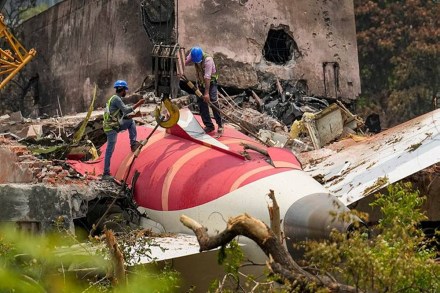Mike Andrews, the lawyer representing families of victims of the June Air India Flight AI171 crash, has strongly dismissed AAIB report claims suggesting pilot error or deliberate sabotage as the cause of the tragedy. In an interview with The Independent, Andrews argued that preliminary reports implying pilot fault were premature and unjust, and highlighted that a potential technical fault of water leaks in electronics bay could have led to the plane crash.
He also stressed the need for a comprehensive investigation before assigning blame on the deceased pilots.
Flight AI171, a Boeing 787-8 Dreamliner, took off from Ahmedabad bound for London on June 12. Within two minutes, the aircraft lost power, veered off course, and struck a medical college building near the runway, killing 229 passengers, 12 crew members, and 19 people on the ground. Among the Air India crash victims were 52 British citizens. The sole survivor was Leicester resident Vishwashkumar Ramesh.
What did Andrew say about water leak?
Andrews highlighted that the Dreamliner had been plagued by technical concerns, particularly regarding its potable water system, which runs close to sensitive electronics. He pointed to FAA bulletins and directives dating back years, warning of water leaks into the electronics equipment bay (EE bay). This compartment houses the Full Authority Digital Engine Control (FADEC), the computer system responsible for regulating the aircraft’s engines.
“Even if it doesn’t ruin the component, water can trigger a reset. That cascade can initiate an engine shutdown. In Ahmedabad, both engines lost thrust within seconds – extraordinarily unlikely without a common cause. Water reaching those systems is one plausible explanation,” Andrews said.
The FAA itself had issued an Airworthiness Directive on May 14, weeks before the crash, warning that improperly installed waterline couplings could cause electrical shorts and loss of critical functions. However, Andrews criticised the directive for lacking urgency, pointing out that Boeing had been aware of such issues for years.
Fadec and modern aircraft safety
FADEC, the “engine brain” of modern aircraft, automatically controls fuel flow, thrust, and engine performance. Unlike older jets, it leaves little manual control to pilots. Andrews stressed that if FADEC or related electrical systems fail, the engines can shut down automatically, explaining the rapid loss of power in Flight AI171.
He cautioned against jumping to conclusions about the pilots’ fuel switches, which preliminary reports suggested had moved to “cut-off” shortly after takeoff. “We don’t know what that cockpit exchange refers to. It is premature to solely blame the pilots when we lack all the data,” he said.
Whistleblowers and ongoing investigation
Andrews confirmed that four individuals with “vital technical and engineering information” had contacted his team, potentially offering insights into the crash. While lawsuits have not yet been filed, his legal team has submitted Freedom of Information Act requests in the US to obtain flight recorder data.
The sole survivor’s account has also informed Andrews’ assessment. He described lights flickering and changing colour moments after takeoff, suggesting electrical anomalies prior to the crash.
For the families, the battle is about more than compensation. Andrews said their main goals are transparency and preventing future tragedies. He criticised any attempt to shift blame downstream to subcomponent manufacturers, emphasising that Boeing cannot absolve itself if defective equipment leads to failures in flight systems.
The broader issue, he argued, is oversight and certification. The 787 Dreamliner was partly certified under the FAA’s ODA system, which allows manufacturers significant authority. Andrews questioned why known risks, like water leaks into critical electronics, were not addressed more urgently.
While Boeing has deferred comment to the Indian Aircraft Accident Investigation Bureau, families continue to wait for clarity. Andrews said, “They’ve earned the right to know what happened here, and each of them wants to prevent this from ever happening again.”
